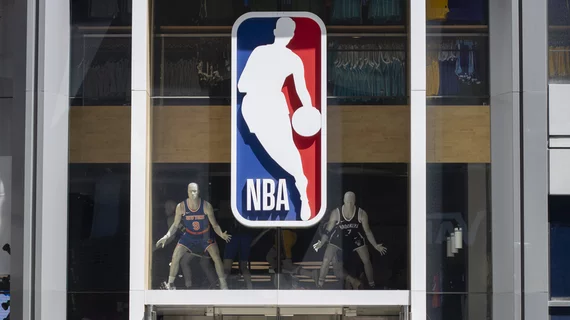NBA partners with GE HealthCare, MedStar Health to gain imaging insights into elite athletes' health
GE HealthCare and MedStar Health are collaborating with the National Basketball Association (NBA), National Basketball Players Association (NBPA) and the Next Gen Basketball Players Union (NBGPU) to collect a slew of imaging data that experts hope will provide information that could help reduce athlete injuries in the future.
The goal of the study is to obtain quantitative data on how daily training and competing affect players’ musculoskeletal health. Researchers are particularly interested in learning more about how physical activity affects the patellar tendon of the knee and are hoping to identify risk factors that might signal the onset of tendinopathy.
The information will be used to inform training, rest and recovery periods.
“For professional athletes, injuries can take a huge toll on their career success, so it has long been one of the goals of the NBA’s Research Committee to promote player health and wellness in the interest of reducing injuries and lengthening careers,” Wiemi Douoguih, MD, medical director of MedStar Sports Medicine and chair of the NBA Research Committee, said in the announcement. “This research lays the foundation to help us better understand the balance between playing, training, and rest so that players can remain as healthy as possible, coaches and teams can have their best season, and fans can see their favorite stars play the game.”
For the pilot study, players of the NBA G League donned wearable technology daily during training to conduct biomechanical, kinematic and force-producing assessments. The players also underwent routine imaging, including ultrasound shear wave elastography and MRI with deep learning reconstruction and muscle analysis.
The players’ imaging was completed using GE HealthCare’s SIGNA Premier 3.0T wide-bore MRI scanner and their LOGIQTM E10s Ultrasound with ML4-20-D transducer. In conjunction with MR imaging, Springbok Analytics’ AI-based 3D muscle analysis was used to construct 3D models of the participants’ muscles to quantify volume, asymmetry, fat infiltration, edema, and tendon and bone morphology.
“GE HealthCare is excited to team up with the NBA and the participating G League players on this pioneering study to improve how the musculoskeletal health of players is analyzed and measured with the hope to find innovations in how athletes can address their musculoskeletal and joint health concerns,” Erin Angel, PhD, VP of Research & Scientific Affairs at GE Healthcare, said in the announcement. “As a leader and innovator in medical technology, we view this imaging study as important for learning more about the human body and how it reacts to physical activity, with the possibility of extending learnings to care for pro athletes, amateur athletes, and the nonsports world beyond.”
The data collection phase of the study just wrapped up. Players from four teams participated during the entire 2023-2024 season, starting in early November and ending in March. Information on when the results are expected to be available has not yet been shared.

